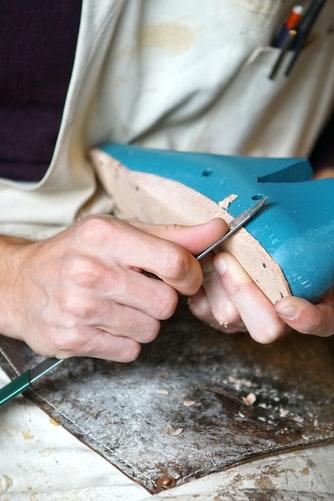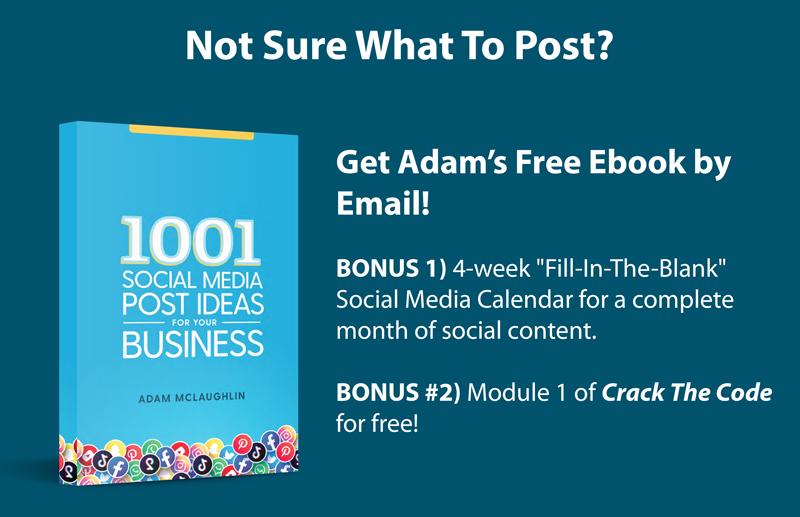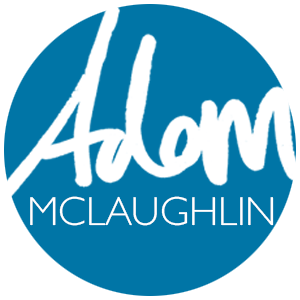How To Make More Money Designing Websites (7 Ways)
(note: some of the links in this article are affiliate links. I may make a commission for recommending them at no cost to you).
Yes, you can make money building websites – but this article is about making MORE money!
 So you’ve got a web design business and you’ve figured out how to make money building websites, maybe as a side hustle or your full-time business, but the question on your mind is how you can make MORE money designing websites. It’s an important question because by scaling you can start to outsource or hire for the things that aren’t in your sweet spot, and start really focussing on working on your business instead of in your business.
So you’ve got a web design business and you’ve figured out how to make money building websites, maybe as a side hustle or your full-time business, but the question on your mind is how you can make MORE money designing websites. It’s an important question because by scaling you can start to outsource or hire for the things that aren’t in your sweet spot, and start really focussing on working on your business instead of in your business.
Often we default to thinking if we can bring in more clients then we’ll make more money, and while that’s often true, there may be ways to be more profitable with the clients you currently have.
Remember: Your client’s end goal isn’t building a website
Your client’s end goal is to make money online. Building a website isn’t their end goal, just a tool to get them to profitability. You’ll help them see how building a website is a path to that end goal.
You’ll increase your confidence and value in building websites when you see yourself as providing products and services that help your client make more money, not simply seeing yourself as just a web designer who is designing websites for local businesses or someone’s side hustle.
It’s worth repeating: They don’t call you because they want to create a website. Business owners call you because they want to find clients online.
This is not going to be a step-by-step how-to in building your side hustle, but more of a brainstorm of ideas that you can use to increase your bottom line and make money building websites. Not every idea will be a match for your business, but take the ideas and find the ones that will matter to your clients.
1) Understand The Benefits of Quantity vs. Quality (aka Templates vs Custom)
 Let me start by saying as a generalized idea, neither is better, but it is important to understand that both are different when you’re building websites for clients. Most web designers will learn that one is better than the other for their particular goals, and understanding the differences can fast-track you to deciding which best suits your model and helps you make more money.
Let me start by saying as a generalized idea, neither is better, but it is important to understand that both are different when you’re building websites for clients. Most web designers will learn that one is better than the other for their particular goals, and understanding the differences can fast-track you to deciding which best suits your model and helps you make more money.
When I first started to make money building websites, I knew I wanted to pursue a service model so I could be building monthly recurring income, but I was building my client’s websites upfront (custom) for $0 to get them into the service model.
It would take 10-12 months into their small business service package before I was making money. Business owners loved the model, but it was because I was giving away my shirt. I still laugh when I think how inefficient it was to try and do custom work for simply a service model.
Learn from me: If you want to make money building websites, it’s best to choose one or the other.
Scaling Your Web Design Business on Quantity (Leveraging Website Templates)
 Quantity is a great way to scale your business when you’ve built a highly repeatable model. If you build websites for ice cream shops, and each time you bring on a new client, you’re populating your ice cream shop template, you can look at scaling based on quantity; How quickly can we bring in more ice cream shops?
Quantity is a great way to scale your business when you’ve built a highly repeatable model. If you build websites for ice cream shops, and each time you bring on a new client, you’re populating your ice cream shop template, you can look at scaling based on quantity; How quickly can we bring in more ice cream shops?
This is a popular model for selling websites as a service (instead of an upfront lump sum) because you’re simply populating your existing templates and getting the client’s website live or a monthly service fee. (This is the model of the “Build Your Agency” course if you want to learn step by step how to create this model.)
The Quantity approach helps your scale your business quickly because you’re building monthly recurring revenue, and once your hit a particular income level, you can easily outsource populating the templates because your entire system is built on a repeatable model.
It is contingent on you focussing on a specific industry and building websites for that industry – it’s the only way templates become efficient as a web designer.
It’s also a very appealing model for a small business, or business owners who are just starting out because instead of hiring someone at a graphic design hourly rate, you’ll get their website up for $0, and a reasonable monthly fee.
How to choose an industry to make money building websites through templates:
- Mostly individual-owned (not franchises with a head office – perfect for a small business)
- Similar needs between different businesses (in the ice cream example, list of flavors, specials, and directions would work for most businesses)
- Simple business model (ice cream has a fairly straightforward offering. A movie production company, or app startup, or sculptor are not going to be standard from one business to another).
You’re also creating income stability because you can project your monthly income based on your current client base. If you don’t bring in any new clients next month, you’ll still have the monthly recurring revenue coming in. If a client walks away, they’re just a small piece of your monthly income.
Building with quantity gives stability because you don’t have a large portion of your income depending on any one client.
When Focusing On Quantity Works Best:
You have a repeatable model. You can be are cost-efficient with that model (for instance, $0 upfront and a monthly service fee for a website: perfect for a side hustle or local businesses starting out). Bring in as many clients as we can to execute that model.
Scaling Your Web Design Business On Quality (Custom Design)
 Not to suggest that your quantity website templates aren’t of high quality, but in this case, we’re talking about custom design work, which understandably comes with a higher dollar value than populating a template.
Not to suggest that your quantity website templates aren’t of high quality, but in this case, we’re talking about custom design work, which understandably comes with a higher dollar value than populating a template.
With custom work, you need to charge an upfront fee to build out a custom website. That’s not to say that you can’t use a starting point like a WordPress and a theme builder like Divi, but you’re not simply copying and pasting text and pictures, you’re actually getting and creating custom content for these based on their business model, audience, needs, opt-in offers.
Custom sites may also need a specific type of functionality – a quoting program, API to a listing website, booking appointments online, etc.
While I’m a big proponent of not reinventing the wheel (there’s probably already software out there that will do these things) there is likely a cost to using those products, so you’ll want to look into those costs before providing a quote.
With custom web design projects, you’re often able to make a substantial profit from a single project to hold you over until the next project. When you figure out how to bring in new clients regularly, then custom projects can allow you to scale by building your team.
When Focusing On Custom Quality Works Best:
You serve an industry where every client has custom needs, or you simply want to serve just a few high-ticket clients.
2) Service Your Web Design Clients Monthly
 Even if you decide not to sell websites as a service, and you do high-ticket custom web design work up front, your clients still have ongoing costs to service their site:
Even if you decide not to sell websites as a service, and you do high-ticket custom web design work up front, your clients still have ongoing costs to service their site:
- Yearly domain registration
- Hosting
- Updates or changes to their content
- Renewing licenses on any custom WordPress plugins
- Email Addresses
Most businesses wouldn’t think twice about a $100-$200/month service fee for your agency to look after all of these details and wrap them into a single service package, and depending on a business’s needs, you could be substantially higher than this. If you’re not servicing your clients monthly, you’re handing money to someone else.
Increase your profit 30% with a service package:
You can easily increase your profit per client in the first year by 30% by offering them a monthly service package. For instance, if you’re selling a custom design at $10,000, then a $300/month service package brings an additional $3600 into your business in the first year, and the lifetime value of the client skyrockets.
Even if you’re in the $3K-$5K custom price range right now, $150/month client service package is an extra $1800 from the client in the first year.
Keys to selling a website maintenance package:
- Include it in your initial quote. Don’t spring it on your client once their website goes live. Set the expectation from the beginning that you’ll be servicing their website each month before you start designing.
- Position the service package fee in terms that relate to your client’s business. How many of your client’s products equate to your monthly service fee? (For the same as booking one night, we’ll service your website each month. For less than a round of 4 players, we’ll service your website each month. For less than the profit from one new client, we’ll look after your website each month).
- Phrase your pricing. For some clients, $299/month sounds like more than $10/day. Phrase your pricing to resonate with your client’s perspective.
- Set all of your invoices to the first of the month. You want your recurring income to all show up at the same time, not a few dollars here and there throughout the month. This makes it easiest to track if someone misses a payment, and helps with budgeting your web design business.
- Use Recurring Invoice Software. DO NOT try to manually process your recurring invoices each month, or send out an invoice. Get a credit card on file. There are plenty of accounting software options that will do this for you like Freshbooks.
3) Increase Your Prices When Quoting New Websites For Clients
I know this sounds incredibly obvious, but the hardest amount of money to get someone to spend is $1. Once they’ve decided they’ve decided that your services are worth spending money on, then it’s just a matter of balancing the value you bring with the return they expect to see.
Increasing Website Prices Gets Easier Over Time
As your business has a stable number of clients on a monthly service plan and you’re hustling for growth rather than hustling simply to get enough to pay the bills, then it becomes easier for you to walk away from business owners when their budget doesn’t match your value.
In the meantime, start adding 10% or 15% to the last price you were about to quote, or increase your package price on your website by 30%.
Fight The Fear: Think of a 30% increase this way:
If 1/3rd of your potential clients walk away because your pricing is too high in their perception, you gross the same money with 1/3 less work.
4) Use A “Request A Quote” Page On Your Website including Budget Field
 Too many designers have a “contact” form on their website that asks for name, email, phone, and message. This is a surefire way to leave money on the table since you’re going into a conversation with a potential client with no context for their business.
Too many designers have a “contact” form on their website that asks for name, email, phone, and message. This is a surefire way to leave money on the table since you’re going into a conversation with a potential client with no context for their business.
If you’re lucky, business owners might leave something in the message field like “I’m starting a paving business and need a website. Afternoons are the best time to call me.”
Instead, have a “request a quote form” that asks 10-12 questions (should be able to complete it in 3-4 minutes) to give you some context for the client’s business. Here’s a general guideline:
- Name
- Phone number
- Name of your business?
- Do you currently have a website? If yes, what’s the address:
- Where are you located?
- What’s the best time to call? (morning, afternoon, evening)
- How do you currently drive traffic to your website / gain new clients?
- What is your design budget? (usually a dropdown with some options/context and a price range)
- What is your budget for servicing your website each month and bringing in new traffic?
In my first year in business, too often the client would respond to a quote with something like “Wow, that’s really reasonable quote!” (aka – wow, you’re cheap). I even lost a few potential clients and they told me they went with another designer who was priced much higher because they didn’t trust that I could actually do their project for the small amount I quoted. (paraphrasing). By lacking confidence it showed through in my pricing.
I would be leaving money on the table because they had a $5K budget, and I was trying to make the sale for $2200 to pay the bills. Once I added the request a quote form to my website, I now had a much better idea for the context for their project, budget, and scope and could let them know if their needs matched their budget, rather than guessing at both.
I’m not advocating topping out a client’s web design budget just for the sake of profit
If they have a simple project, quote them accordingly, and add on some bonus value.
For instance, if they have a $10K budget, but you would have quoted them $3k, then let them know their website is $3k, but with the balance of their budget, you could work with someone to create them a custom video for their site, create some social media graphics and images for them to use, build a landing page for each of the subsections of their audience, or help them create blog content for the next 12 months.
This is especially true if you’ve just quoted other potential clients a similar project for $3K. You can’t then turn around a charge another local business $10K without any justification on the difference – you’re just going to upset someone.
5) Don’t Quote Website Prices Over The Phone for Custom Work
If you have a templated quantity-style model then your prices are probably already on your website. Go ahead and send that link to the client when they ask about pricing, but for custom work (or they want your template, but have a specific customization need that’s not included in your typical package) don’t give them a quote over the phone.
Most people on the follow-up call will ask “How much is this project?” or “What is your hourly rate?”
I always have their “Request A Quote” submission in front of me when I call for a follow-up, so I can look down and see what they put in their budget field. I’ll often say “I see that the budget you had in mind was “$5K – $10K” so I’ll look into the specifics of your customization details and see what software is out there to help us get those results for you, and I’ll send you an email tomorrow with full details. I see your email address on the form is ______. Is that the best address to send your quote?”
What if you think their project is an $8K project, then after you get off the phone, you find out the software they need to do a specific integration is $2499.99? That’s going to hurt. Instead, add that as a line in your quote so they understand where the costs are coming from.
Other things to avoid on your phone call:
Don’t talk about WordPress, themes, plugins, or related software; these things don’t matter to your clients (plus, if they google WordPress they’re going to see the word “free”). What matters to them is making money, so talk with them about how you’ll get results, not the tools you’ll use to get there.
Quick Tip for Quoting Web Design Projects:
Don’t send them a quote, then wait for approval, then send a contract. Send their quote as their web design contract with a note that says, “Here’s your quote. When you’re ready to move forward, just sign and scan it back to me and we’ll get started.”
6) Execute Every Time
 The best way to grow your income is to service your clients well.
The best way to grow your income is to service your clients well.
Their word of mouth is the best way for new clients to arrive at your request a quote form already deciding they want to work with you.
If their friend says you’re the best, you always reply to emails the same day, and you hit your timelines, then you’re miles ahead of the competition, and worth paying a premium for.
How to get more client referrals than 90% of Web Designers: Communication.
- Hit your timelines and commitments every time.
- Have a system of steps that the client can follow along to build confidence in your process.
- Make suggestions to your clients that may increase their return (It’s been a while since we updated photos, would you send 1 or 2 new ones over? Any new menu items to add to your website? Have you considered putting a button at the top each month for your monthly special?)
- Answer emails.
- Answer your phone.
- Send out Christmas or Holiday cards.
- Email your clients just to see if they need any updates to their site.
- Let them know when you’re upgrading your services / hosting speed / etc at no cost to them.
- Like their posts on social media.
Want to be known as the expert web designer among your clients and leverage their network for referrals? Be present for them and they’ll refer you in a heartbeat.
7) Offer Additional Digital Marketing Services
 What other digital marketing services can you price in a way that adds value to your clients and also has margin to be profitable for you?
What other digital marketing services can you price in a way that adds value to your clients and also has margin to be profitable for you?
Can you come up with something that you can create once and make available to multiple clients with some light customization?
Additional Digital Marketing Products and Services:
- Email Marketing: A weekly or monthly email newsletter for their client list.
- Social media content management: create and schedule their social media posts for them.
- Custom video made for their website.
- Host a live stream interview once a month with someone from their office to answer client questions.
- Create Blog content for their website.
- Opt-In content to grow their email list.
- Facebook Ads.
- Design a landing page for each of their subsections of the clients they serve.
When you’re thinking about services you could offer, make sure that you’re charging enough to make a profit per hour that you’re putting in, or about to outsource the work for less than it costs you to get paid for the job.
 Bonus: Using Social Media To Bring In New Clients with a social media strategy.
Bonus: Using Social Media To Bring In New Clients with a social media strategy.
While I’m a BIG proponent of leveraging the power of social media, make sure these other ideas are working for you first to maximize the profitability of your future cleints.
Final Thoughts On Making More Money Building Websites:
You can almost always increase your prices and make more money. It’s more often about your self-confidence than your client’s budget, but I’m hoping these tools along the way will help you gain the confidence to add that extra margin, and build a recurring income.
Whether you’re a full-time web designer, this is a side hustle, or you’re exploring new ways to make money online through additional products and services for your clients, you’ve got this.
Have a question or an idea I missed? Leave it below so we can all learn together!
